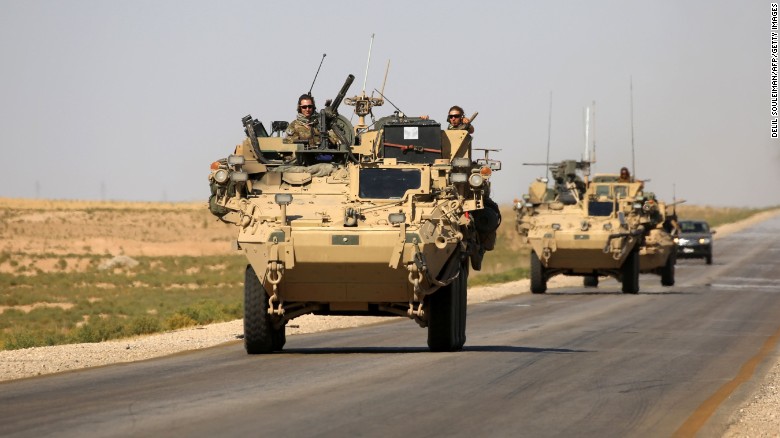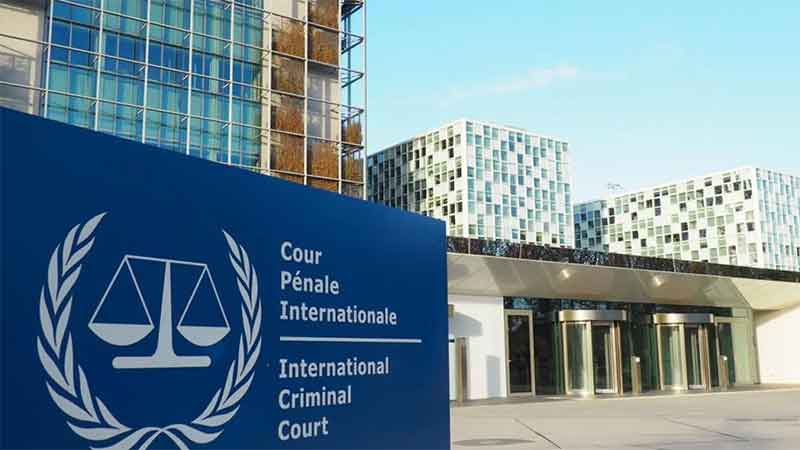
In July 2003, Dr. David Kelly, a British weapons inspector who had disclosed to the media that Tony Blair’s government’s dossier on Iraq’s weapons of mass destruction was “sexed up,” was found dead in a public park a mile away from his home.
The inquiry into his death concluded that Kelly had committed suicide by slitting his left wrist but the mystery surrounding his death has remained unresolved to date, though the obvious beneficiary of his propitious “suicide” was the British intelligence itself.
More recently, on March 4 last year, Sergei Skripal, a Russian double agent working for the British foreign intelligence service, and his daughter Yulia were found unconscious on a public bench outside a shopping center in Salisbury. A few months later, in July last year, a British woman, Dawn Sturgess, died after touching the container of the nerve agent that allegedly poisoned the Skripals.
In the case of the Skripals, Theresa May’s government promptly accused Russia of attempted assassination. There are a couple of caveats, however. Firstly, although Sergei Skripal was a double agent working for MI6, he was released in a spy swap deal in 2010. Had he been a person of importance, Moscow would not have released him and let him settle in the UK in the first place.
Secondly, the British government concluded that Skripal and his daughter were poisoned with a Moscow-made, military-grade nerve agent, Novichok. A question would naturally arise that why would Russian secret agents leave a smoking gun evidence behind that would lead prosecutors straight to Moscow when their assassins could have used a gun or a knife to accomplish the task?
Sergei Skripal was recruited by the British MI6 in 1995, and before his arrest in Russia in December 2004, he was alleged to have blown the cover of scores of Russian secret agents. He was released in a spy swap deal in 2010 and was allowed to settle in Salisbury.
Both Sergei Skripal and his daughter have since recovered and were discharged from hospital in May last year, which means they might not have been poisoned by Novichok. In fact, Russia’s Foreign Minister Sergei Lavrov shared the results [1] of a Swiss laboratory in April last year, according to which “BZ toxin” was used in the Salisbury poisoning which was never produced in Russia, but was in service in the US, UK and other NATO states.
Nevertheless, the US, UK and European nations expelled scores of Russian diplomats and the Trump administration ordered the closure of Russian consulate in Seattle. In a retaliatory move, Russia also expelled a similar number of American, British and European diplomats, and ordered the closure of American consulate in Saint Petersburg. The relations between Moscow and Western powers reached their lowest ebb since the break-up of the former Soviet Union and the end of the Cold War in December 1991.
Although Moscow might appear as an aggressor in these instances, in order to understand the real casus belli of the new Cold War between Russia and the Western powers, we must recall another momentous event that took place in Deir al-Zor governorate in eastern Syria in February last year.
On February 7, a month before the alleged assassination attempts in Salisbury, the US B-52 bombers and Apache helicopters struck a contingent of Syrian government troops and allied forces in Deir al-Zor that reportedly [2] killed and wounded scores of Russian military contractors working for the Russian private security firm, the Wagner group.
The survivors described the bombing as an absolute massacre, and Kremlin lost more Russian citizens in one day than it had lost throughout its more than tow-year-long military campaign in support of the Syrian government since September 2015.
The reason why Washington struck Russian contractors working in Syria was that the US-backed and Kurdish-led Syrian Democratic Forces (SDF) – which is mainly comprised of Kurdish YPG militias – had reportedly handed over the control of some areas east of Euphrates River to Deir al-Zor Military Council (DMC), which is the Arab-led component of SDF, and had relocated several battalions of Kurdish YPG militias to Afrin and along Syria’s northern border with Turkey in order to defend the Kurdish-held areas against the onslaught of the Turkish armed forces and allied Syrian militant proxies during Ankara’s “Operation Olive Branch” in Syria’s northwest that lasted from January to March 2018.
Syrian forces with the backing of Russian contractors took advantage of the opportunity and crossed the Euphrates River to capture an oil refinery located to the east of the Euphrates River in the Kurdish-held area of Deir al-Zor.
The US Air Force responded with full force, knowing well the ragtag Arab component of SDF – mainly comprised of local Arab tribesmen and mercenaries to make the Kurdish-led SDF appear more representative and inclusive – was simply not a match for the superior training and arms of Syrian troops and Russian military contractors. Consequently, causing a carnage in which scores of Russian citizens lost their lives, an incident which became a trigger for the beginning of the new Cold War as is obvious from subsequent events.
Regarding the brinkmanship, in the aftermath of alleged Douma chemical weapons attack in Syria on April 7 last year, one of the “smartest” American presidents ever tweeted on April 11, 2018: “Russia vows to shoot down any and all missiles fired at Syria. Get ready Russia, because they will be coming, nice and new and ‘smart!’ You shouldn’t be partners with a Gas Killing Animal who kills his people and enjoys it!”
When Donald Trump’s advisers drew his attention to the fact that he might have telegraphed his intentions of bombing Syria to Moscow, he came up with an even more childish tweet the next day, saying: “Never said when an attack on Syria would take place. Could be very soon or not so soon at all! In any event, the United States, under my Administration, has done a great job of ridding the region of ISIS. Where is our Thank you America?”
Fact of the matter is that during the week before the alleged chemical weapons attack in Syria, Donald Trump was so distracted by the FBI’s raid on the office of his attorney Michael Cohen and the release of former FBI director James Comey’s tell-all book that he had paid scant attention to what had happened in Syria.
He kept fulminating about those two issues throughout the week before the alleged Douma chemical weapons attack on his Twitter timeline and mentioned the alleged chemical weapons attack in Syria on April 7 last year only in the passing.
Even though Trump’s babysitter then-Secretary of Defense James Mattis admitted on the record that although he was sure chlorine was used in the attack in Douma, Syria, he was not sure who carried out the attack and whether any other toxic chemical agent, particularly sarin, was used in the attack. If chlorine can be classified as a chemical weapon, then how is one supposed to categorize white phosphorous which was used by the US military in large quantities in the battle against the Islamic State in Raqqa?
Despite scant evidence as to the use of chemical weapons or the party responsible for it, Donald Trump ordered another cruise missiles strike in Syria on April 14 last year in collaboration with Theresa May’s government in the UK and Emmanuel Macron’s administration in France. The strike took place a little over a year after a similar cruise missiles strike on al-Shayrat airfield on April 6, 2017, after an alleged chemical weapons attack in Khan Sheikhoun, that accomplished nothing.
Both those cruise missiles strikes in Syria were not only illegal under international law but were also unlawful under American laws. While striking the Islamic State targets in Iraq and Syria, Washington availed itself of the war on terror provisions in the US laws, known as the Authorization for the Use of Military Force (AUMF), but those laws do not give the president the power to order strikes against the Syrian government targets without the approval of the US Congress which has the sole authority to declare war.
The Intercept reported last year [3] that the Trump administration had derived the authority to strike the Syrian government targets based on a “top secret” memorandum of the Office of Legal Counsel that even the US Congress can’t see. Complying with the norms of transparency and rule of law had never been the strong points of American democracy but the Trump administration had done away with even the pretense of accountability and checks and balances.
The fact that out of 105 total cruise missiles deployed in the April 14, 2018 strikes against a scientific research facility in the Barzeh district of Damascus and two alleged chemical weapons storage facilities in Homs in Syria, 85 were launched by the US, 12 by the French and 8 by the UK aircrafts demonstrated that the strikes were meant as a show of force against Russia by a “powerful and assertive” American president who regards the interests of his European allies as his own.
Footnotes:
[1] Lavrov: Swiss lab says ‘BZ toxin’ used in Salisbury:
https://www.rt.com/news/424149-skripal-poisoning-bz-lavrov/
[2] Russian toll in Syria battle was 300 killed and wounded:
[3] Donald Trump ordered Syria strike based on a secret legal justification even Congress can’t see:
Nauman Sadiq is an Islamabad-based attorney, columnist and geopolitical analyst focused on the politics of Af-Pak and Middle East regions, neocolonialism and petro-imperialism.







































